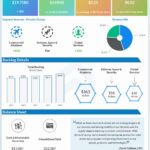The short-term trend of Nifty continues to be negative. After showing a lack of strength during the recent upside bounce, the market is now placed at the edge of a downside breakout of 19500 levels.
The next lower levels are to be watched at 19,225 levels and immediate resistance is placed at 19,700 levels, said Nagaraj Shetti of HDFC Securities.
OI data showed that on the call side, the highest OI was observed at the 19,700-19,800 strike price, while on the put side the highest OI was at the 19,500 strike price.
What should traders do? Here’s what analysts said:
Jatin Gedia, Sharekhan by BNP Paribas
On daily charts, we can observe that the Nifty is unable to sustain at higher levels. The key hourly moving averages placed in the zone 19,590– 19,640 is acting as a stiff resistance and until the Nifty does not manage to close above this resistance zone we can expect the weakness to continue.
On the downside, it can slip towards 19,440 – 19,320 where support parameters in the form of a 78.6% Fibonacci retracement level and 20-week moving average are placed. We have been anticipating a pullback, however, the attempts have been fragile and thus we shall await a decisive price confirmation. In terms of levels, 19,500 – 19,440 is the crucial support zone, while 19,590 – 19,640 shall act as an immediate hurdle zone.
Rupak De, Senior Technical analyst at LKP Securities
Looking ahead, the level of 19,480 is expected to serve as a pivotal “make or break” point. If there is a decisive decline below 19,480, it might trigger heavy selling in the market. On the upside, 19,600 will continue to remain a significant resistance level.
Shrikant Chouhan, Head of Research (Retail), Kotak Securities
For bulls now, 19,580 could be the immediate resistance zone, above which the index could move up to 19,700-19,725. On the flip side, 19,450 and 19,480 would act as a strong support zone for the traders. Below 19,450, the selling pressure is likely to accelerate and the index could slip to 19,375-19,350.
(Disclaimer: Recommendations, suggestions, views, and opinions given by the experts are their own. These do not represent the views of The Economic Times)








